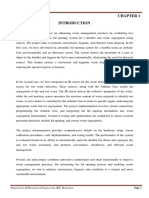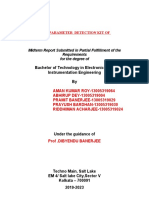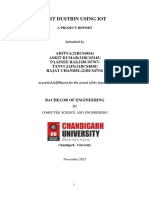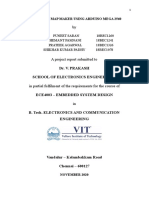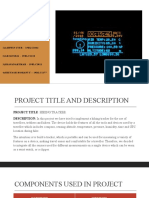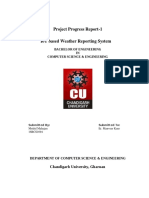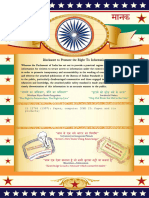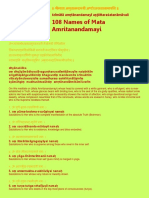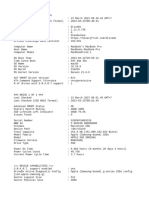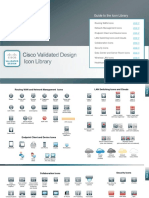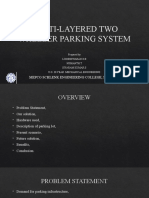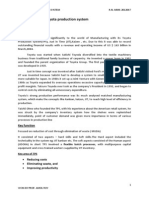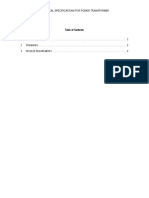Design Report: Development of a Bin
Capacity Measurement Device
1
�1. Introduction......................................................................................................................................... 3
2. Design problem....................................................................................................................................4
3. Requirements....................................................................................................................................... 5
4. Design process..................................................................................................................................... 6
5. Final design..........................................................................................................................................9
6. Bill of Materials (BoM)..................................................................................................................... 15
7. Conclusion......................................................................................................................................... 17
References............................................................................................................................................. 18
Appendix A: Order form....................................................................................................................... 19
2
� 1. Introduction
The project was initiated as a response to the rising demand for smart management
solutions, owing to the inadequacies of conventional bin collection methods. These methods
often result in either overflowing bins, which can lead to environmental concerns, or bins that are
not filled to their capacity, resulting in inefficiencies in waste collection (NL Times, 2022). Our
device intends to tackle these issues by delivering precise and timely information on the capacity
of each bin, empowering waste management services to plan collections more effectively. In this
order, the aim of this report is to present the design phase of our project which involves creating a
sensor-based device capable of measuring the remaining capacity in a garbage bin. The device's
primary objective is to offer real-time updates on the status of the bin, which would allow for
efficient waste management and collection. The project will employ Arduino microcontrollers,
LIDAR (Light Detection and Ranging) sensors, and an OLED display to monitor the
measurements, resulting in a scalable and sustainable waste monitoring solution. Additionally,
we will consider using an ultrasonic sensor as a Plan B if the LIDAR fails to provide the
expected results. Furthermore, we will investigate the possibility of incorporating Bluetooth
connectivity into the device, which would enable us to receive data without having to read it
from the OLED display. We will also investigate the possibility of having a metal cover for the
device for protecting that.
The following sections of this report will provide a detailed overview of our design
process. This includes the hardware and software design, as well as the anticipated challenges
and proposed solutions. The report will conclude with the next steps and the plan for the
implementation phase of the project. Through the development of this device, we hope to not
only improve the efficiency of waste collection but also contribute to reducing the environmental
impact of waste management. Our ultimate goal is to create a scalable, reliable, and
cost-effective solution that can be implemented in various settings, from residential areas to
commercial and industrial sites.
3
� 2. Design problem
The challenge of efficient waste management has long been a pressing concern in both
urban and rural settings. Traditional waste collection methods rely heavily on predefined
schedules, which often result in overfilled or underfilled bins (Expatica, n.d.). Overfilled bins can
lead to spillage, increased pollution, and attract vermin, while underfilled bins result in
inefficient use of waste collection resources. In the Netherlands, overflowing bins have become a
significant issue (NL Times, 2022). This project seeks to address this problem by providing
accurate data to waste management services, enabling them to empty the bins promptly and keep
the society happier. The absence of real-time data on bin capacity and ineffective collection
routes exacerbate these challenges, highlighting the urgent need for smarter and more efficient
waste management solutions. This project aims to offer a prototype that contributes to that
solution.
4
� 3. Requirements
● Utilizing reliable sensors that can accurately measure the fill level of the bin and
withstand the conditions inside the bin for an extended period.
● Using an efficient way to transmit and monitor the data.
● Using a proper low-cost microcontroller (ESP-32 or Arduino UNO).
● Utilizing a 3D printed body as a case for hardware.
● Using a proper way to connect the device to the bin.
These requirements are subject to change slightly depending if anything additional is
needed to make this project work correctly. However, these are the base focused requirements.
We will also explore the following optional requirements as an improvement to the first
prototype.
● Utilizing a sturdy casing and protective body to construct the prototype.
● Using a bluetooth based communication for receiving the data.
5
� 4. Design process
To design the final product we came up with expectations to fulfill our purpose as a waste
bin capacity measurement device. Our target use place is underground waste bins but for this
project testing it will be on a normal bin. To commence the design process, we began by creating
a list of questions that needed to be answered in order to gain a comprehensive understanding of
the final design. This was based on our analysis report. As a result, we identified eight critical
issues that required attention for the product to be successful:
● Sensor type considering external effects on accuracy
● Microcontroller type
● The housing of the device
● Communication and monitoring
● Power source
● Mounting
● Cost
When measuring the level and volume of bulk solids in a vessel, the uneven surfaces can
often result in measurement issues, making it challenging (NOAA, 2021). It's crucial to
recognize that relying on a single-point measurement may not be adequate for real-world
applications. Two sensor options are available: ultrasonic and LIDAR. Ultrasonic sensors are
simpler, cheaper, and more suitable for simple applications with limited accuracy and range. In
contrast, LIDAR sensors are highly accurate and can create detailed maps using lasers, making
them ideal for complex applications (MaxBotix, 2021). To address the issue of point-to-point
measurement, multiple sensors can be used to obtain an average value. However, for the
prototype, we will use only one sensor. If the prototype is successful, using four sensors is also a
viable option.
Our device will be mounted in a closed off area with minimal dust particles and
obstructions, and it will operate within a short range of less than 2 meters. Without any special
conditions, ultrasonic sensors are more economical, easier to use, and have better longevity.
6
�However, considering the differences in accuracy between the two sensors, our primary focus
will be on using the LIDAR sensor to achieve the most accurate measurements. At the same
time, we plan to investigate the accuracy of the ultrasonic sensor and consider it as a backup plan
if any issues arise with the LIDAR sensor. By taking these factors into account, we can make an
informed decision that will provide accurate results for our specific application.
The next aspect to consider is the impact of external factors on accuracy. For ultrasonic
sensors, temperature fluctuations can affect accuracy by 7-8% over a 100 cm distance for every
20-degree change, making it essential to take temperature into account (Senix Corporation, n.d.).
On the other hand, for LIDAR sensors, humidity is likely the most significant factor to consider
when it comes to accuracy (Rock Robotic, n.d.). Currently, since we cannot measure the effects
of these factors, we have decided to keep them in mind for future investigation, not for current
prototyping.
Selecting the microcontroller is a straightforward decision, as either an Arduino UNO or
an ESP-32 can suffice for this project. These options are widely accessible, cost-effective, and
can handle all the essential tasks while being compatible with all the components. However, we
have decided to use the Arduino UNO for this project because it offers better analog-to-digital
conversion and is more compatible with the model of LIDAR sensor we plan to use, as indicated
in the documentation (All3DP, n.d.).
When designing the housing for the device, we took into consideration the likelihood of
exposure to external forces, such as shaking and water droplets, necessitating a sturdy casing.
However, we recognize that making a case that can address all of these issues for the prototype is
currently infeasible. Instead, we used 3D modeling software to create a simple box with premade
holes for the OLED display and sensor. We plan to 3D print the casing using FDM printing due
to its cost-effectiveness compared to resin printing, and we will use whatever materials are
available in the Makerspace. For connecting two parts of the case, we considered using magnets
at the beginning. Then we came to the idea of a combination of the magnet and a screw as it
provides a better connection and also avoids opening of the case by any person. While we
acknowledge the current limitations of creating a water and force-resistant case, we have
considered the possibility of enhancing the device's protection with a metal casing. Nonetheless,
we recognize that this is not an essential requirement and will require further investigation.
7
� In our design, we found that continuous data transmission is not required, particularly
given the device's location underground and at a long distance. Although we initially considered
using LORA, we later discovered that it requires advanced programming, and our consultations
recommended against it. Therefore, for the prototype, we will use an OLED display to show the
readings. Additionally, we plan to investigate the possibility of transmitting data using a
Bluetooth connection.
We have decided to use a battery as the power source for our device due to the limited
options available. However, we have also considered the possibility of using solar power in
future developments of the device. At present, due to cost constraints, the battery is a more
viable option.
For stability, we have opted for screws as the mounting option. Initially, we planned to
mount the device on the top part of the bins. However, we discovered that due to the different
shapes of the bins, this was not the most suitable option. After further investigation, as we can
see in Figure 1 we found that all the underground bins have a metal plate directly connected to
the container beneath them. Therefore, we have decided to mount the device on that plate and
screw it in place for maximum stability.
Figure 1 – The container of the underground bin (Not Just Bikes, 2019)
8
� 5. Final design
The schema below shows the connection for the electrical equipment of the device. An
Arduino UNO which is powered by a power source is connected at the same time to a OLED
display and also to a LIDAR sensor.
Figure 2 – The schematic of connections
For the LIDAR sensor, we will use the SEN0259 laser range sensor. This sensor provides
a high accuracy measurement with a maximum detection range of 12m. The size of this sensor is
42mm x 15mm x 16mm and it is known for its excellent high precision in measurement despite
its small size. It is also important to mention that this sensor uses UART / I2C communication
interface for interacting with microcontrollers.
9
� Figure 3 – SEN0259 Laser Range Sensor (DFRobot, n.d.)
And for the OLED display, we will use the SSD1306 display.
Figure 4 – SSD1306 OLED display (Okaphone, n.d.)
Below are the 3D designs of the device housing, which consists of a top and bottom part.
The bottom part features a sensor hole that faces the bin container and four screw holes for
attaching the part to the metal plate below it. This bottom part will be mounted on the metal plate
below the bin shown in Figure 1. Additionally, there are two small 1mm indentations on each
side that serve as placement areas for the 4mm diameter magnet. These magnets align with the
screw placements on the top part, allowing for attachment of the top part to the bottom part.
10
� Figure 5 – Bottom part of the 3D design
The top part of the design is also depicted in the image below. As can be seen, it includes
placement for the OLED display, as well as one screw hole on each corner along with the magnet
indentations for attaching the top part to the bottom part. These designs will be printed using a
FDM printing method.
11
� Figure 6 – Top part of the 3D design
It is also worth noting that in the design, we paid careful attention to the details. For
instance, the screw holes were designed with a spiral structure instead of a simple hole to
improve compatibility with the screw structure.
12
� Figure 7 – Screw holes
The assembled version of the design shown in the Figure below.
Figure 8, 9 – Assembled design
To power the device, we will utilize a power source such as a power bank, which will be
housed inside the device. This power source will supply power to the microcontroller, which will
in turn power the OLED display and the sensor.
13
� As mentioned in earlier sections of the report, in addition to the basic requirements, we
also considered two bonus requirements for this project that will require further investigation.
The first involves utilizing leftover metals and the techniques of working with metals available in
the Makerspace to create a metal cover shield for the device. The second bonus requirement is to
establish wireless Bluetooth-based communication with the device.
Furthermore, we have also kept the ultrasonic distance sensor as a backup option in case
the LIDAR sensor does not deliver the expected results.
14
�6. Bill of Materials (BoM)
Preview Item No. Description Material Price Quantity
ABS or PLA
3D design top
(depends on
01 part (30 × 30 - 1
the martial of
cm)
Makerspace)
3D design
02 bottom part ABS or PLA - 1
(30 × 30 cm)
03 LIDAR sensor - € 40,36 1
We will use
the one we
04 Arduino UNO - have from 1
previous
projects
05 OLED display - € 7,45 1
We will use
06 Power bank - our own power 1
bank
USB Cable for We will use
07 - 1
Arduino UNO our own cable
15
� We will use
the leftover
08 Jumper wires - cables from -
the electrical
lab
€ 5,79 for a
09 Magnet - 12
pack
We will use
the leftover
10 M2 Screws - screws from 8
the
Makerspace
Ultrasonic
11 - € 2,95 1
distance sensor
Depends on
the material in
12 Metal plates - -
the
Makerspace
16
� 7. Conclusion
In conclusion, this report addressed the design of a waste bin capacity device that provides an
accurate measurement of the bin's volume and displays data on an OLED screen. This device is intended
for use in underground waste bins in urban areas, to solve the problems of overflowing bins and
inefficient waste collection routes.
To ensure high accuracy of the device's readings, we have decided to use the LIDAR sensor as the
primary option, and an Ultrasonic sensor as a backup option to compare their accuracy. While we
recognize that further improvements can be made in terms of housing design and detailed specification
requirements, the prototype will serve as a benchmark for all design requirements.
We have also addressed the requirement of using leftover materials by utilizing a few leftover
items available in the Makerspace and our own Arduino to tackle this requirement. We believe that this
device will not only provide a technological solution to a common problem but also bring a socially
beneficial product.
17
�References
1. Not Just Bikes. (2019, Dec 30). We Have No Garbage Day in Amsterdam! [Video]. YouTube.
https://www.youtube.com/watch?v=0JtoSafhvLM
2. DFRobot. (n.d.). LIDAR Laser Range Sensor - TFmini. Farnell.
https://nl.farnell.com/dfrobot/sen0259/LIDAR-laser-range-sensor-tfmini/dp/3769959?st=LIDAR
3. Okaphone. (n.d.). Ultrasoon afstandssensor. Retrieved May 11, 2023, from
https://www.okaphone.com/artikel.asp?id=484012
4. 3- NL Times. (2022, July 20). Amsterdam struggling to get a grip on garbage problem.
Retrieved from
https://nltimes.nl/2022/07/20/amsterdam-struggling-get-grip-garbage-problem
5. Expatica. (n.d.). Recycling in the Netherlands. Retrieved from
https://www.expatica.com/nl/living/household/recycling-in-the-netherlands-133948/
6. National Oceanic and Atmospheric Administration (26 February 2021). "What is
LIDAR". oceanservice.noaa.gov. US Department of Commerce. Retrieved 15 March
2021.
7. MaxBotix. (2021, June 10). Ultrasonic Sensors vs LiDAR: Which One Should You Use?
[Blog post]. Retrieved from
https://maxbotix.com/blogs/blog/ultrasonic-sensors-vs-lidar-which-one-should-you-use#:
~:text=The%20working%20principle%20of%20LiDAR%20sensors%20is%20similar%2
0to%20that,from%20an%20array%20or%20cluster.
8. Senix Corporation. (n.d.). Ultrasonic Sensor Accuracy. Retrieved May 12, 2023, from
https://senix.com/ultrasonic-sensor-accuracy/#:~:text=Temperature%20fluctuation%20aff
ects%20the%20speed,that%20the%20target%20is%20closer.
9. Rock Robotic. (n.d.). How Does LiDAR Intensity Impact the Accuracy of Point Clouds?
[Blog post]. Retrieved May 12, 2023, from
https://learn.rockrobotic.com/how-does-lidar-intensity-impact-the-accuracy-of-point-clou
ds.
10. All3DP. (n.d.). ESP32 vs Arduino: Differences. Retrieved May 12, 2023, from
https://all3dp.com/2/esp32-vs-arduino-differences/.
18
�Appendix A: Order form
19

